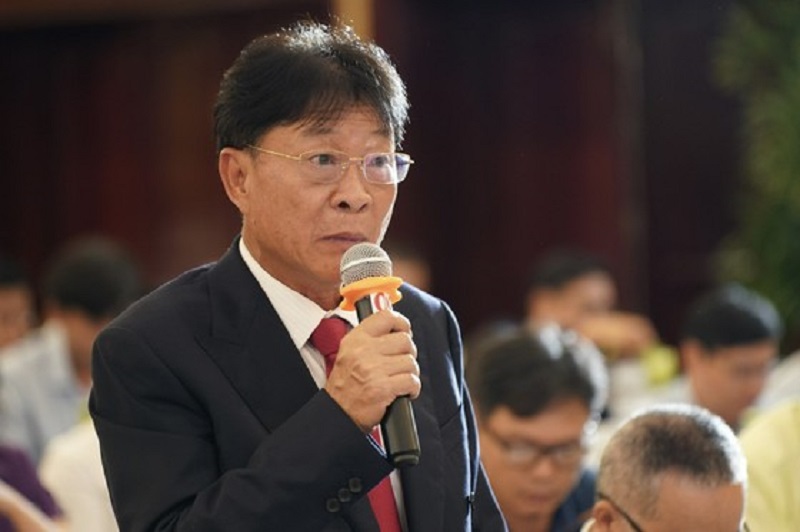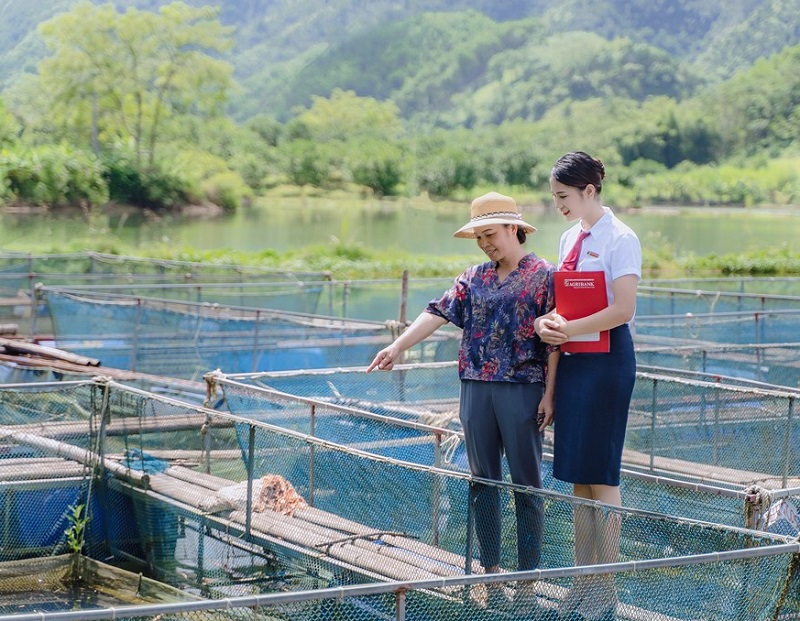How are green loans being implemented?
While the share of green loans remains low, accounting for only 4.32% of total outstanding debt in the economy, Vietnamese banks are actively engaging in green lending schemes.
According to statistics from the Vietnam Banks Association, during the period from 2017 to 2022, the average annual growth rate of green credit in the Vietnamese banking sector exceeded 25%, surpassing the average credit growth rate in the overall economy. However, the share of green credit remains modest due to its status as a relatively new area.
Nevertheless, many commercial banks have introduced green credit packages with various incentives for businesses, thanks to initiatives by the State Bank of Vietnam (SBV) to channel credit funds into environmentally friendly projects.

Mr. Pham Trung Kien, Deputy Head of the Agribank Southern Representative Office, stated at the "Green Finance and Carbon Credit Market" seminar in Ho Chi Minh City that since 2016, Agribank has implemented a preferential credit program with a minimum scale of 50 trillion VND, with no restrictions on funding sources, to support "clean agriculture" for community health. The initiative, which offers lower credit rates ranging from 0.5% to 1.5% per year, is aimed at firms, cooperatives, cooperatives, and farm owners involved in various stages of safe agricultural product manufacturing.
With a debt of 12 trillion VND and over 43,000 clients, Agribank's clean agricultural and high-tech agriculture loan has already hit 25 trillion VND, representing for 50% of total investment capital in this industry.
The funding provided by Agribank has aided in the development of large-scale agriculture production models utilizing advanced technology throughout Vietnam, such as climate-controlled greenhouses (French technology), multi-layer cultivation (Singaporean technology), and smart greenhouse production and irrigation (Israeli technology).
Mr. Nguyen Dang Thanh, Deputy CEO of HDBank, further stated that HDBank has been actively supporting green projects since 2018 by expanding resources for green transformation and raising staff knowledge of greenhouse gas emissions reduction. HDBank was among the first banks to commit 11 trillion VND in green financing in 2022.
Mr. Thanh believes that the burgeoning carbon credit market would make carbon credits a one-of-a-kind commodity in the reduction of greenhouse gas emissions. The issue for regulatory agencies is to create a carbon credit market that encourages corporate expansion.
MB Bank has been funding renewable energy projects since 2017, contributing 8%-10% of its total outstanding debt to green credit sectors. By 2026, the bank hopes to boost the percentage of green lending and loans for technological transformation to 15%.
Despite sluggish global loan growth at the start of the year, credit is still flowing in 2023 because to the efforts of various financial institutions. Vietcombank and JBIC (Japan) inked a $300 million USD cooperation agreement in March 2023 to offer extra support for renewable energy projects.

Although the share of green credit remains low, figures from the State Bank of Vietnam show a growth rate of more than 25% each year, which is greater than the average credit growth rate in the economy, with 39 credit institutions participating.
To address the primary cause for the sluggish adoption of green credit, the State Bank of Vietnam is now preparing a set of green category criteria that are consistent with international norms and will be submitted to the government as soon as feasible. Banks will have a reference point to use when choosing whether or not to accept green investment, and diverse enterprises will have a clear development path to access both local and foreign financial sources.
According to Mr. Nguyen Ngoc Hoa, Chairman of the Ho Chi Minh City Business Association (HUBA), the business community is interested in green financing and the carbon market.
Mr. Hoa also stated that firms require green loan schemes in order to undergo green transformation. The bulk of Vietnamese firms are now small and medium-sized, making it difficult for them to issue green bonds on their own. while a result, Mr. Hoa advocated that financial rules and government organizations build procedures and solutions to allow financial institutions to issue green bonds for firms while they undergo change.
During the September session of the Municipal People's Council in Ho Chi Minh City, the execution of Resolution 98 will be renewed, including measures for financial support in terms of capital and interest rates for green transformation projects.








